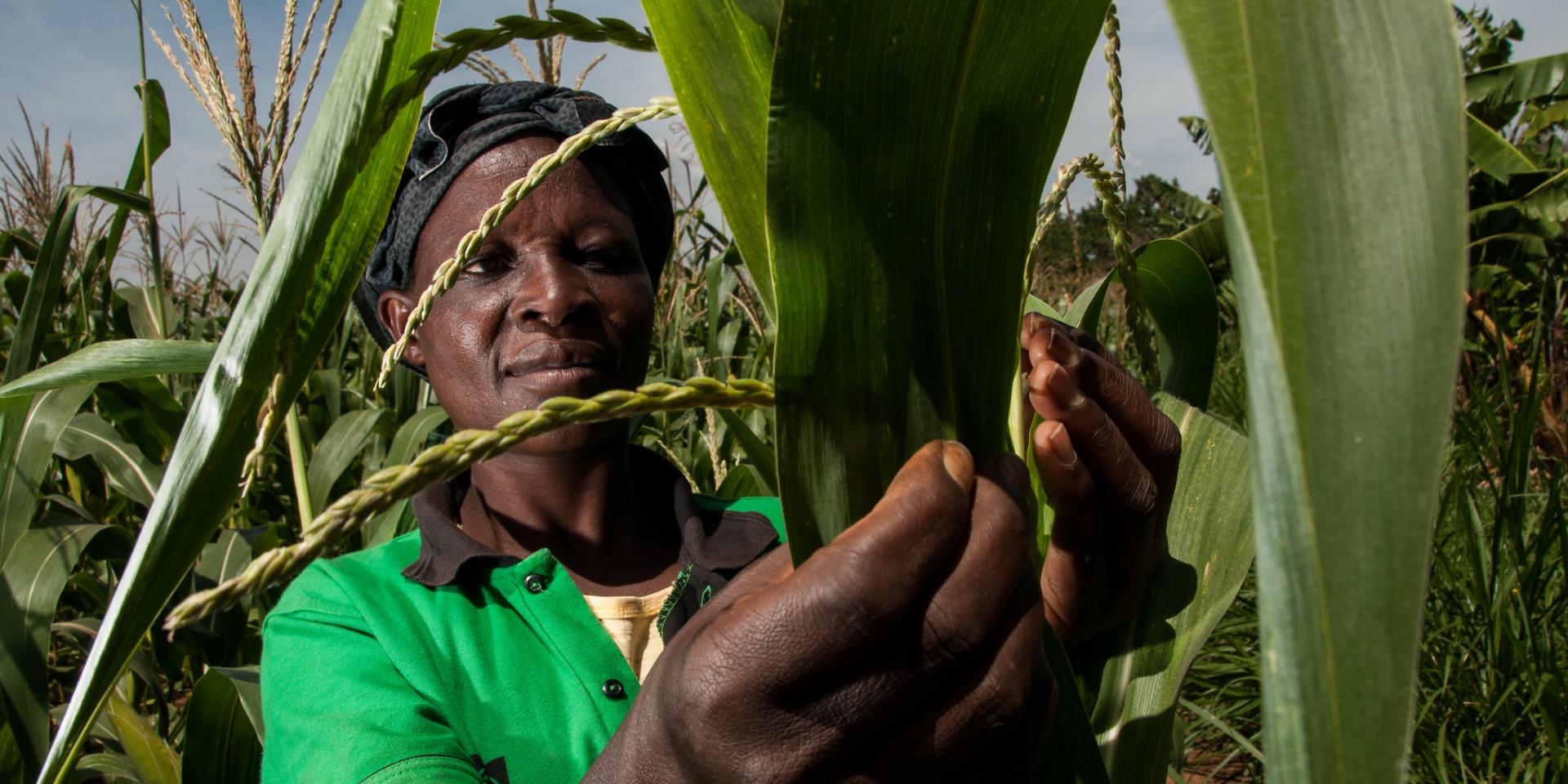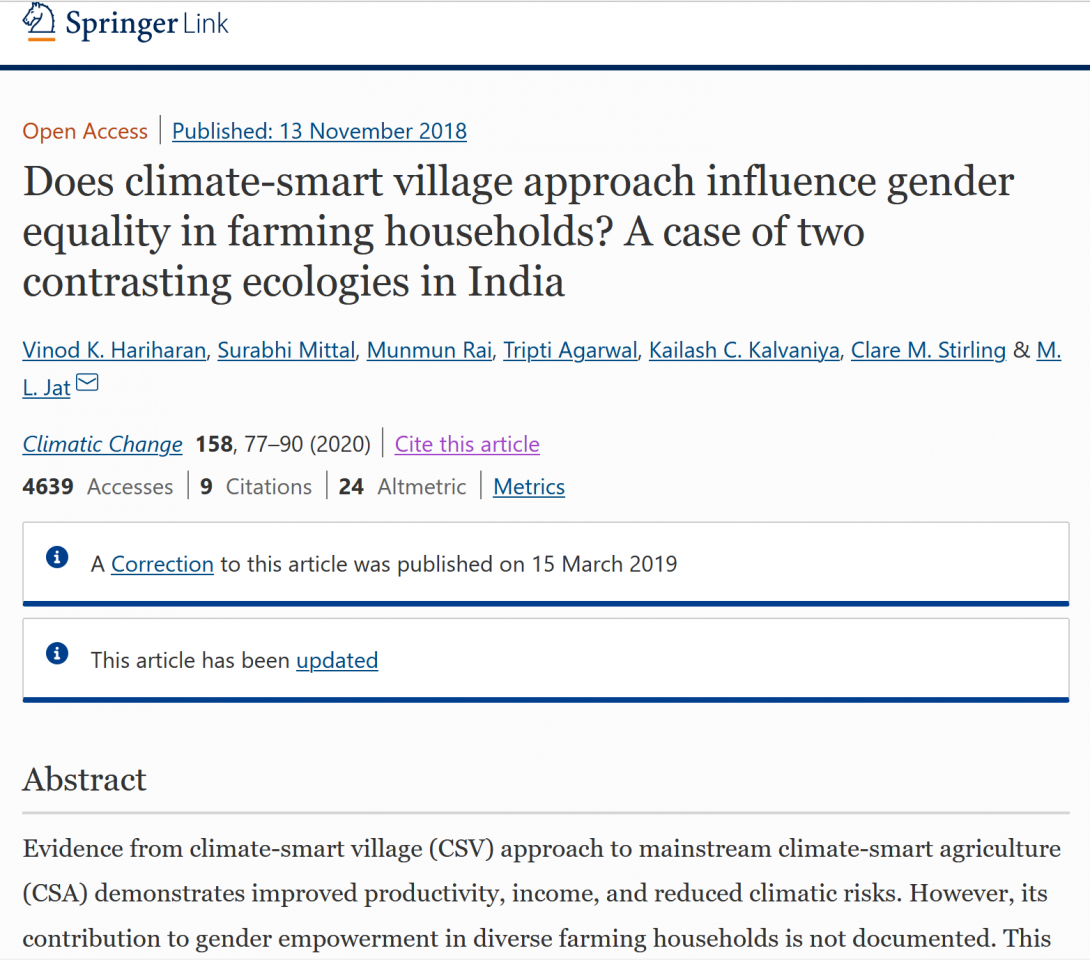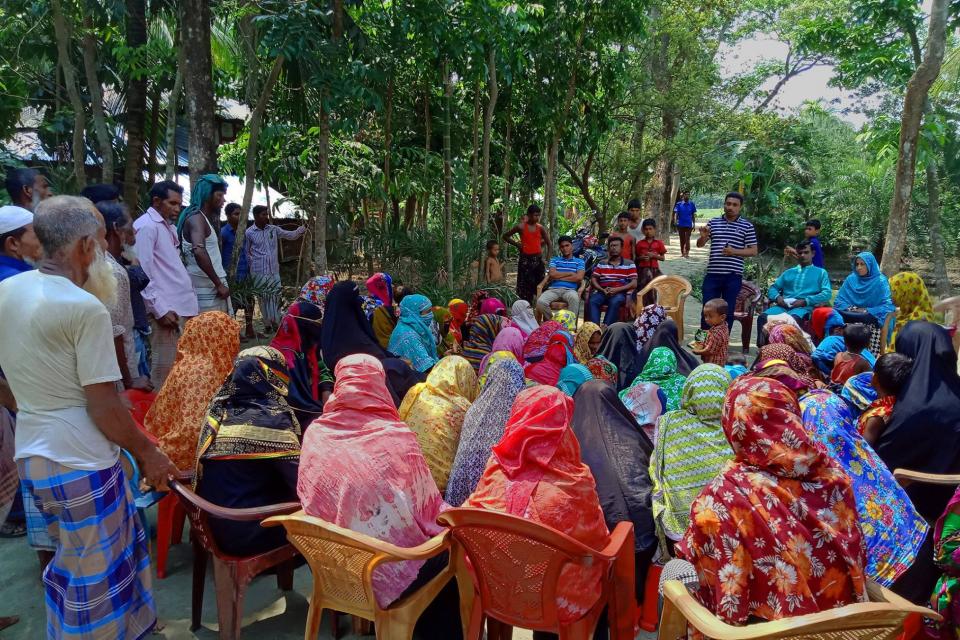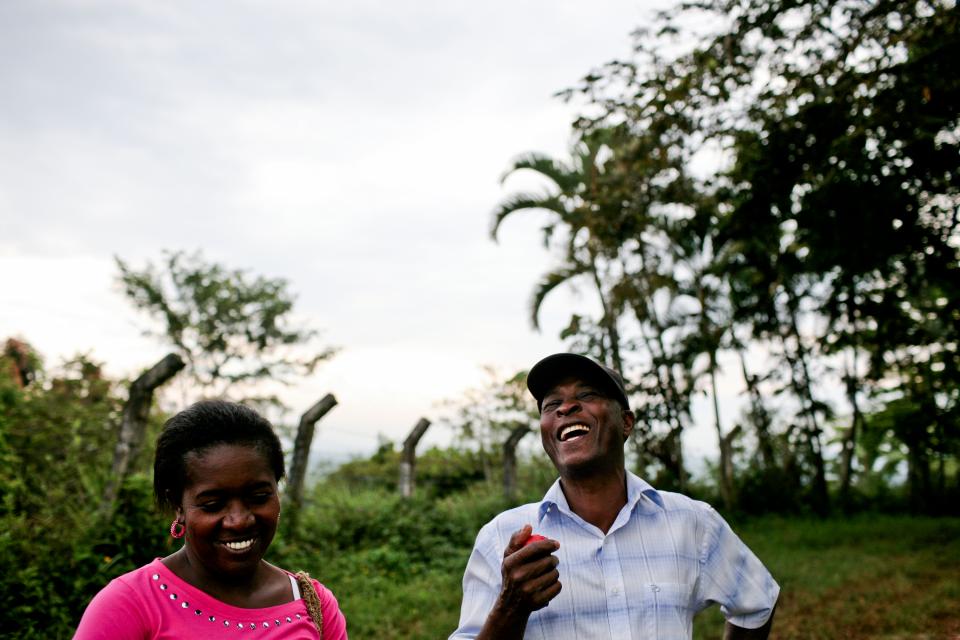Gender Empowerment Index for climate-smart villages
 Photo: Georgina Smith/CIAT.
Photo: Georgina Smith/CIAT.
The index measures if climate-smart approaches can better empower women and men, and contribute to gender equality.
Why is the method important?
Women have a lower adaptive capacity to climate change. Evidence from efforts to increase resilience, ‘climate-smart agriculture’, shows increased improved productivity, income and reduced climatic risks. But researchers have little evidence of how these benefits interact with gender empowerment in diverse farming households.
This is concerning because (1) climate-smart approaches affect the decision-making capability of people differently, (2) access and control over resources across gender is vital in mainstreaming climate-smart agriculture and (3) effective scaling of climate-smart agriculture requires active participation and empowerment of women with their men counterparts.
Who is the method for?
This tool can help people working with climate-smart approaches to introduce corrective measures during project interventions to create faster outcomes, and to further improve the role for women in agriculture by increasing the impact of designed interventions using climate-smart villages.
Country of focus: India
How can I use the tool?
This index helps analyze if climate-smart approaches can lead to the better empowerment of both women and men across political, social, economic and agricultural domains; and if it can contribute to gender equality.
The gender gaps examined in the study were derived by mapping difference in empowerment levels across selected climate climate-smart and non-climate-smart villages in two contrasting ecologies and socioeconomic settings in India. [Gender equality is an important aspect in the adoption of climate-smart agriculture practices.]
Results of the study show how gender empowerment differs in those villages. It also demonstrates that climate-smart agriculture has increased knowledge and capacity of both women and men farmers, and promoted gender equality in farming households. Finally, it shows that measuring empowerment using the GEI-CSV can be strengthened if the data is recorded at the beginning and over years of interventions.
This supports the aims of climate-smart agriculture which are to address the interlinked challenges of food security and climate change, by sustainably increasing agricultural productivity to support equitable increases in farm incomes, food security and development.
When and how was it developed?
CIMMYT (International Maize and Wheat Improvement Center) researchers wrote the paper about the index in 2020. Their survey was undertaken in climate-vulnerable climate-smart and non-climate-smart villages in India. Women and men were randomly surveyed with a structured questionnaire and focus group discussions. The index was then built around the four domains and weights assigned to each.
Where can I get the method/tool/course? Who can I contact?
You can download the paper here.
Contact the authors via M. L. Jat, International Maize and Wheat Improvement Center (CIMMYT), M.Jat@cgiar.org.
Publications

Does climate-smart village approach influence gender equality in farming households? A case of two contrasting ecologies in India
Hariharan, V. K., Mittal, S., Rai, M. et al. 2020. “Does climate-smart village approach influence gender equality in farming households? A case of two contrasting ecologies in India.” Climatic Change 158, 77–90. https://doi.org/10.1007/s10584-018-2321-0.


